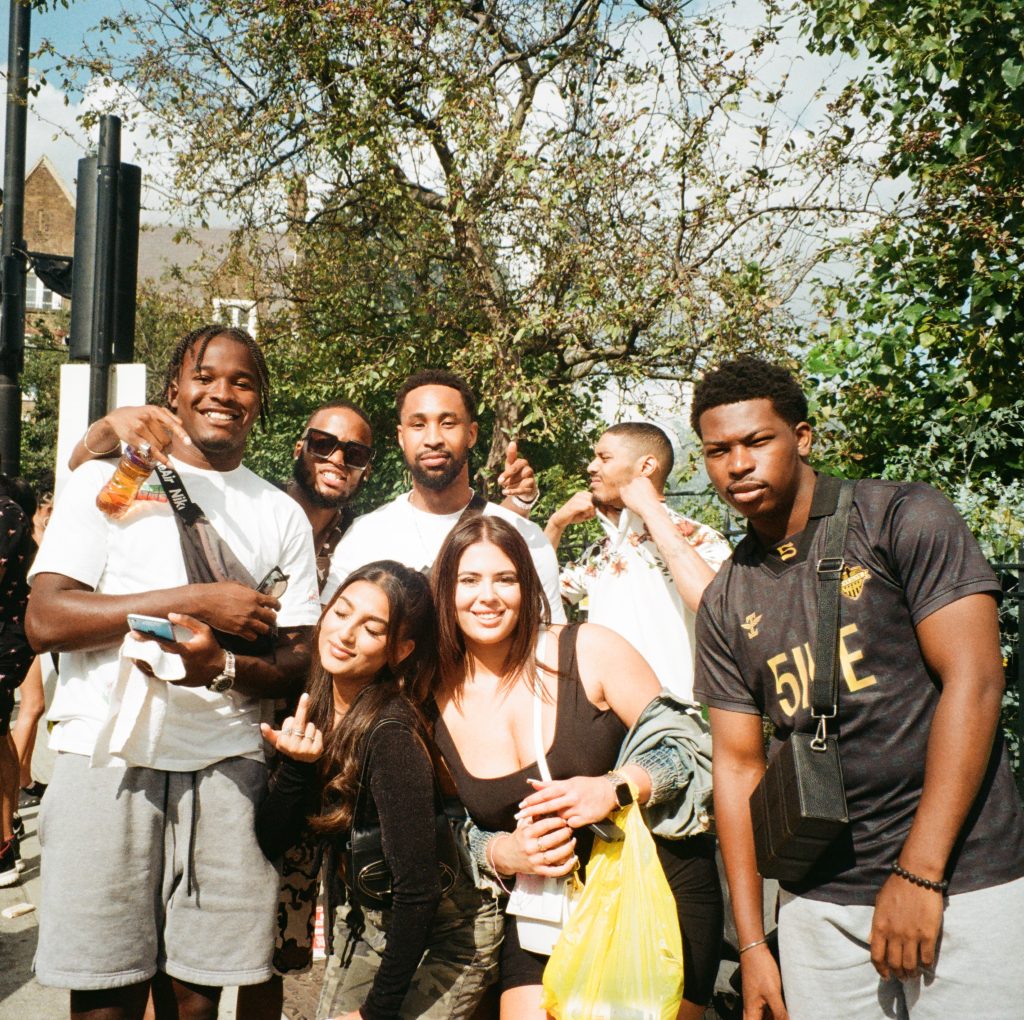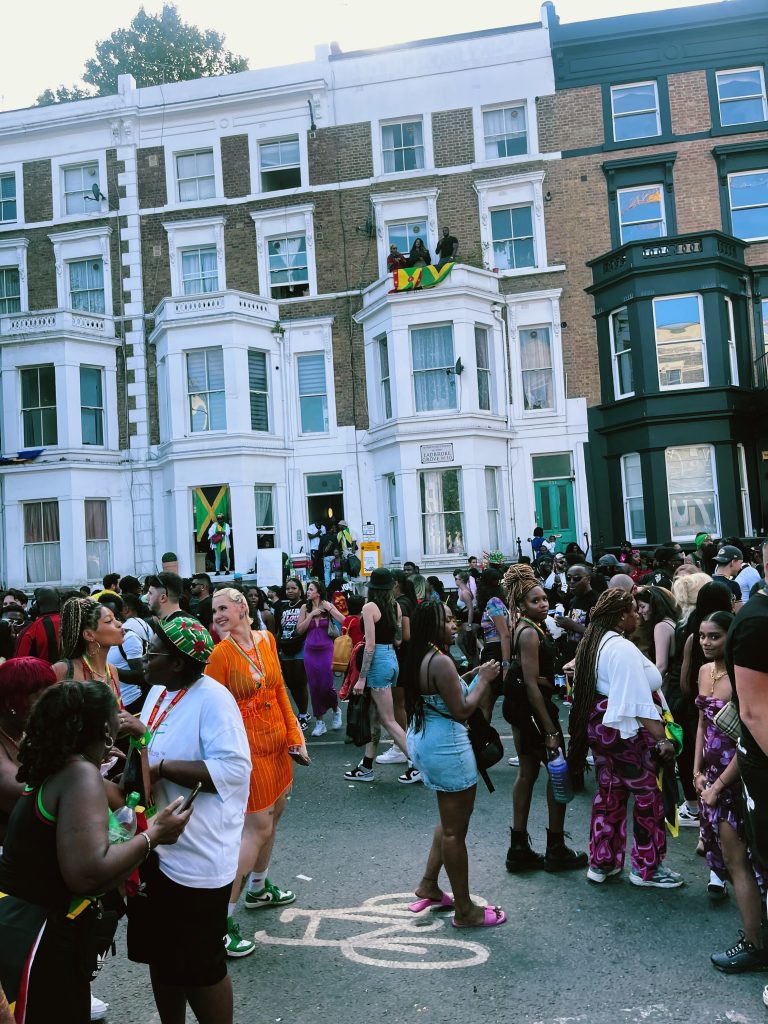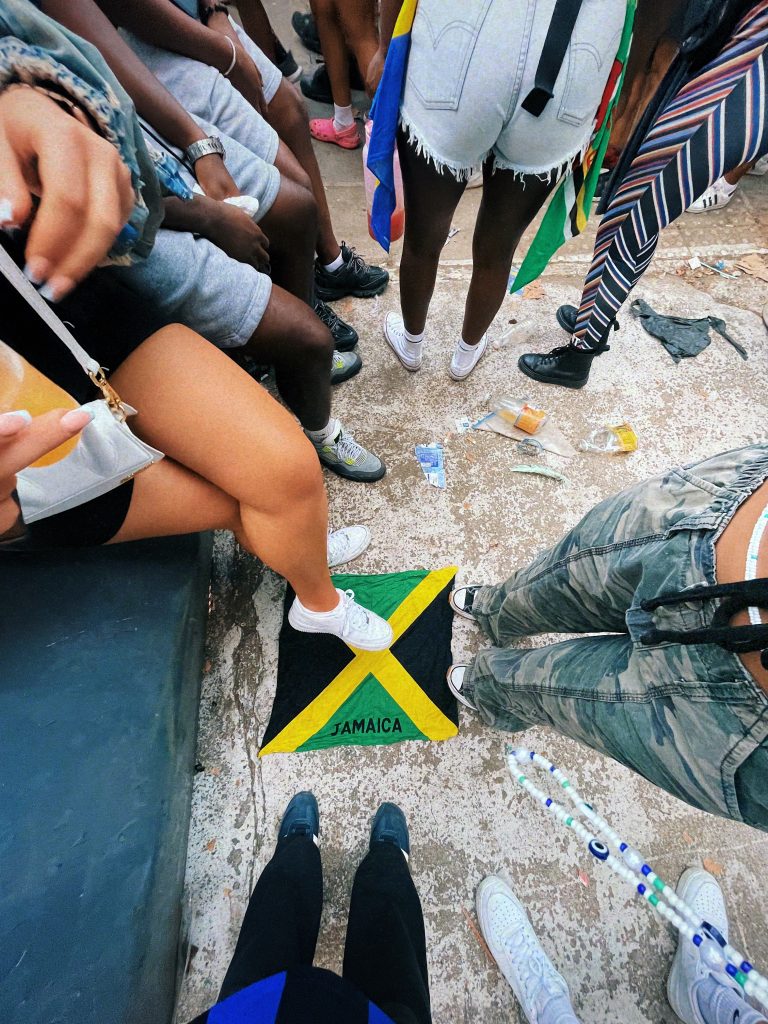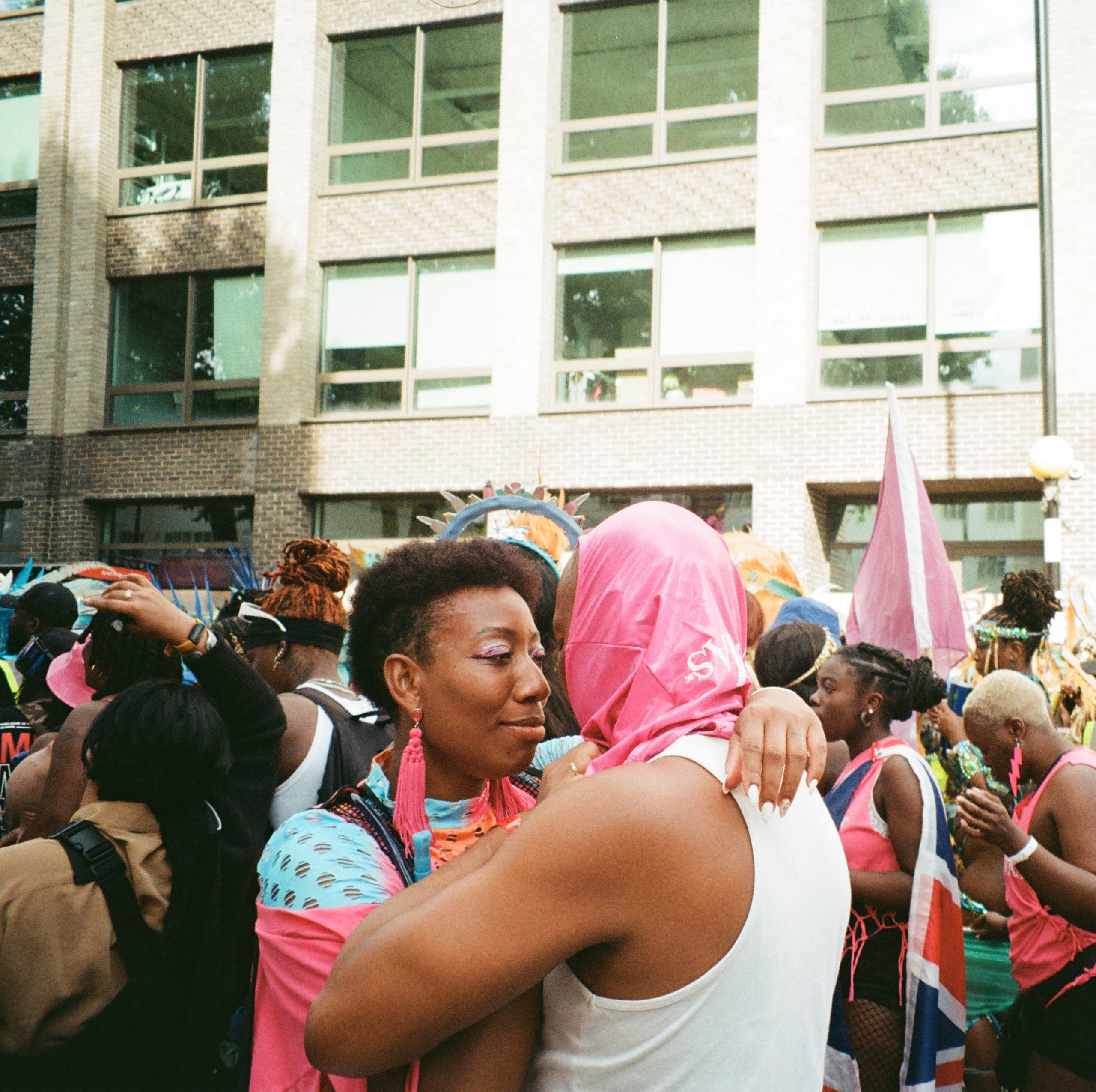It is the flags that make Notting Hill Carnival truly come alive. Those flags represent land repossession, even for a day, using sound system, dance and fashion as a channel for such exotic freedom of expression. Everybody knows that when a lot of Black and Colored people walk down any road it is called a protest, but at Notting Hill, Seeing those flags being hoisted is what bubbles the air of excitement for all the two million people who take to West London to gyrate intensively for 48 hours, and to, this year especially, celebrate the 75th anniversary of HMT Empire Windrush docking at Tilbury. The flags at Notting Hill Carnival serve as a reminder of how honourable men and women from the Caribbean sailed in, willingly, to answer a call to help rebuild the British empire from the degradation of World War II.
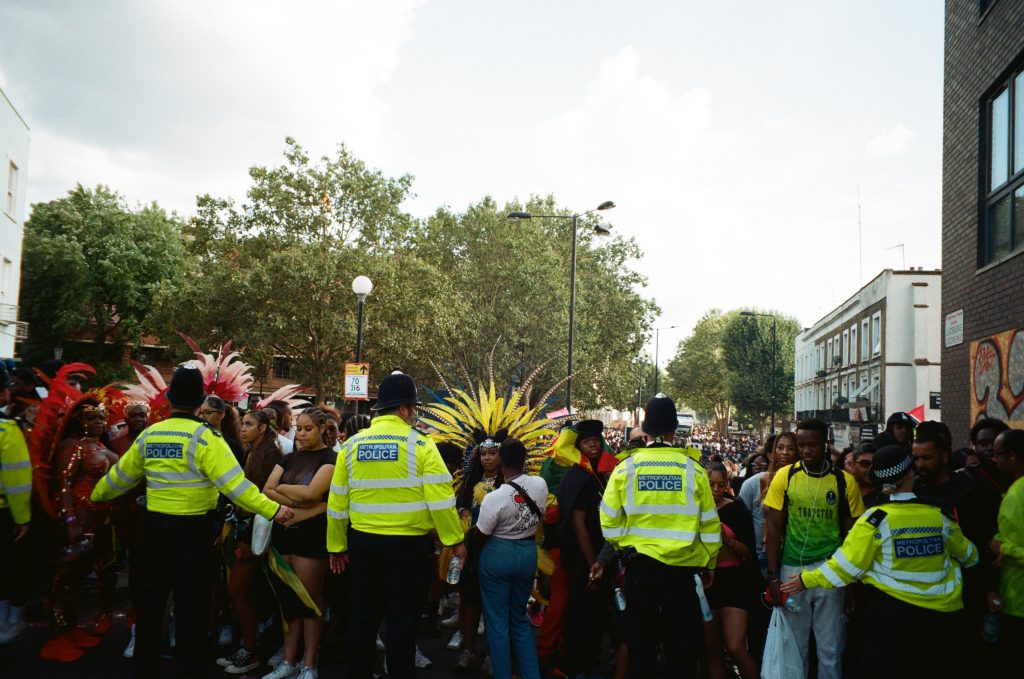
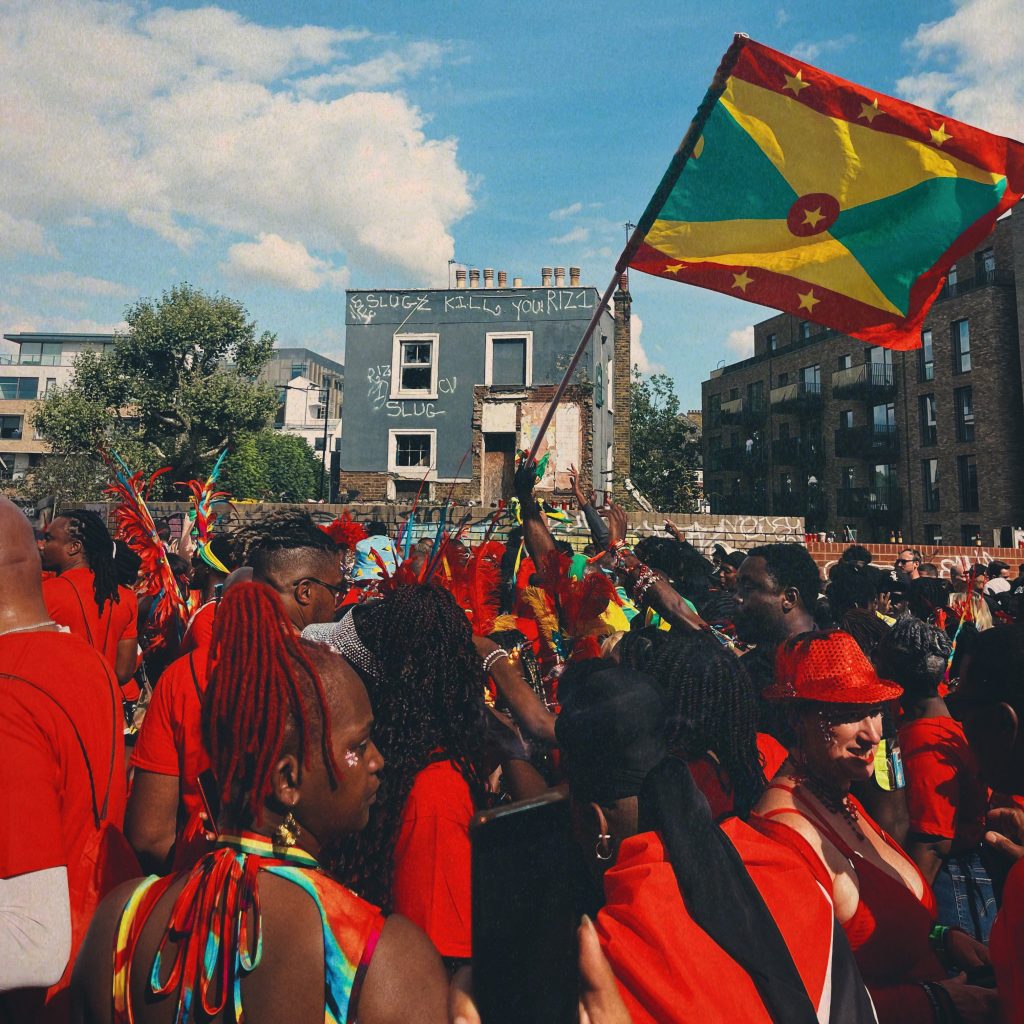
Most Media images of Notting Hill carnival tend to focus mainly on seductive sweaty Black Bodies in gridlock streets mashed up in whoopee embrace, but for a second, we would love to acknowledge the colours from Caribbean flags, the Black, Yellow, and Green of Jamaica, Grenada’s diagonally divided field of yellow-green-yellow-green with a red border; in addition to the six yellow stars in the border, St Lucia, Trinidad and Tobago and Barbados.
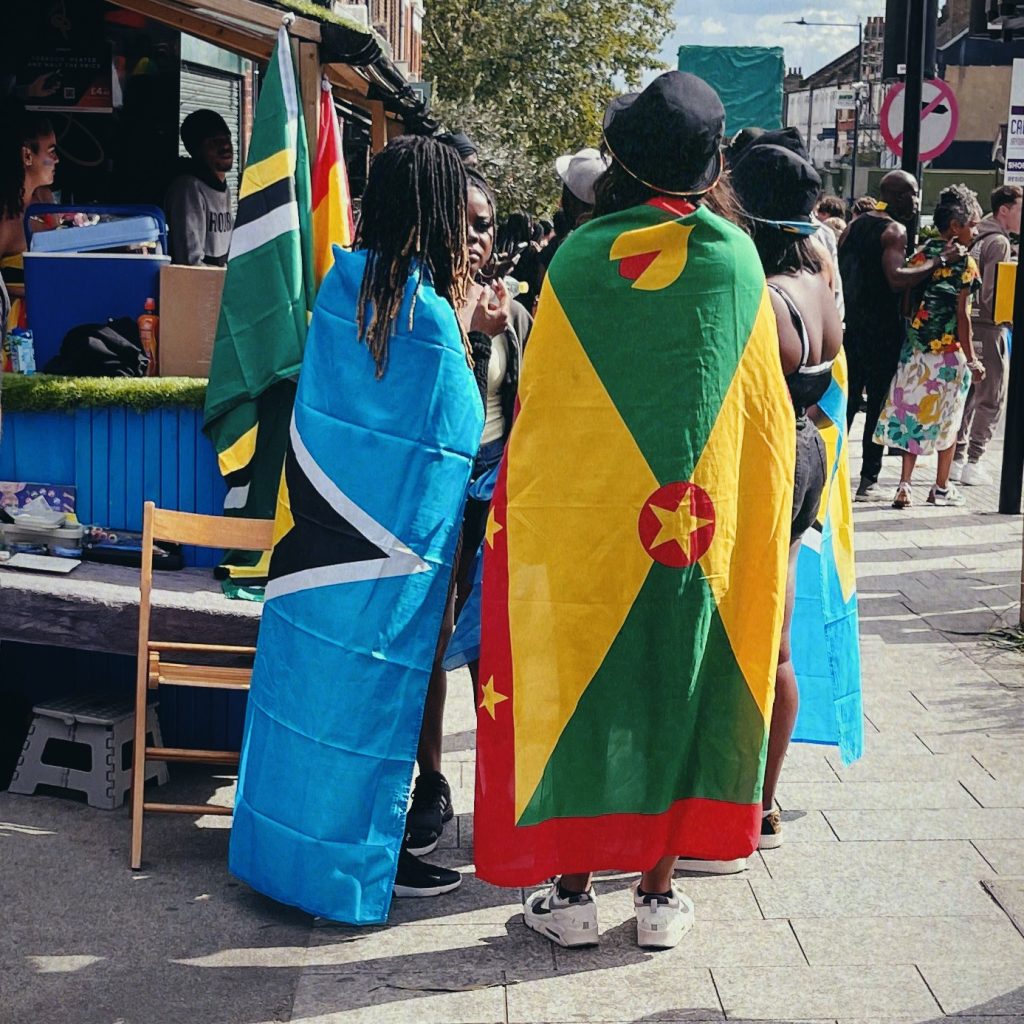
Random Photo Journal created a Journal Project in 2020 focused on unification through collective memories. We always reach out to frequent travellers around the world and ask them to share a series of photos that represent a memory about a place they visited, currently or in the past, attached with a story that led to why they made such photos. This project is an experimental medium that seeks to include, more than those on the African continent, but those who are in diaspora to share their own stories about returning to a place they love, either as a form of reconnection or for friends and family. For this Jounal project, we have Muna Adan, a London-based Somali photographer share her photographic experience at Notting Hill Carnival, a place where passionate friends reunite with each other from every part of the world, and also where some friendships were born.
Hello Muna Adan and welcome to Random Photo Journal! Briefly introduce yourself, What do you do and what got you started on your documentary journey?
Hello, my name is Muna Adan. I guess some would say I’m a photographer but I think I’m much more than that. I am creative at heart whether that’s on a canvas or my camera. I like to create impressions and express myself wholeheartedly and I can only hope people appreciate that. sometimes it’s not about creating it’s about capturing and just being a part of a moment and sharing that moment in time with others who couldn’t experience it first-hand.
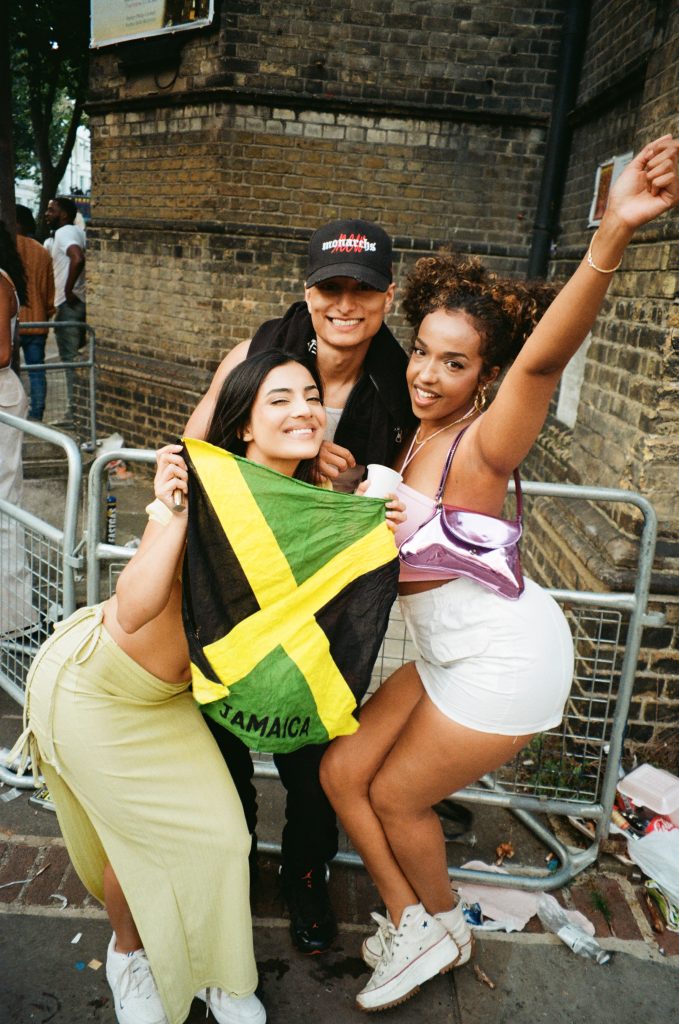
Sometimes it feels like everyone is propelled from wherever they are during this time of the year to start heading straight to Notting Hill, so, in your own words, what do you think makes Notting Hill Carnival so special, what does it mean to you?
I think the unity is very special all the different races and cultures coming together I think that’s something that is priceless. There’s music, dancing, costumes and everything else any carnival lover could possibly want. The Notting Hill carnival is the ideal way to bring together a divided country and remember those who have been caught up in the Windrush
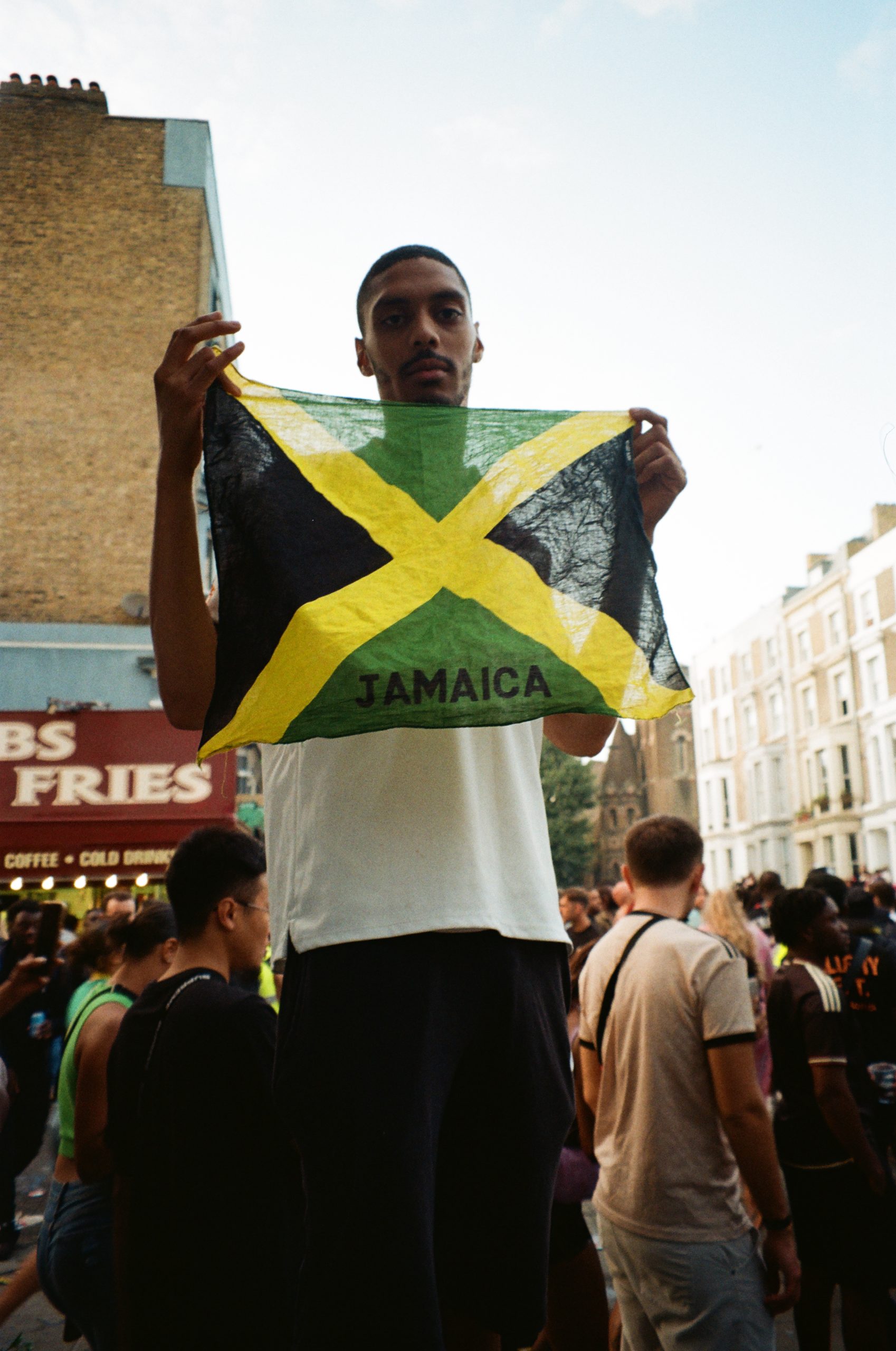
In a place so crowded, naturally, everyone is going to bump into each other while walking even if you stand in a single position. Given these, did you face any troubles while documenting the carnival?
Documenting the Carnival was a new experience and such a learning curve for me as everything moves so fast so you have to be really instinctive and intuitive with the kind of shots you’re making. You have to feel the moment instead of waiting for the perfect shot and then at the same time you have to balance that with not being too intrusive into people’s personal space so it’s a balancing act the whole day which was quite the challenge.
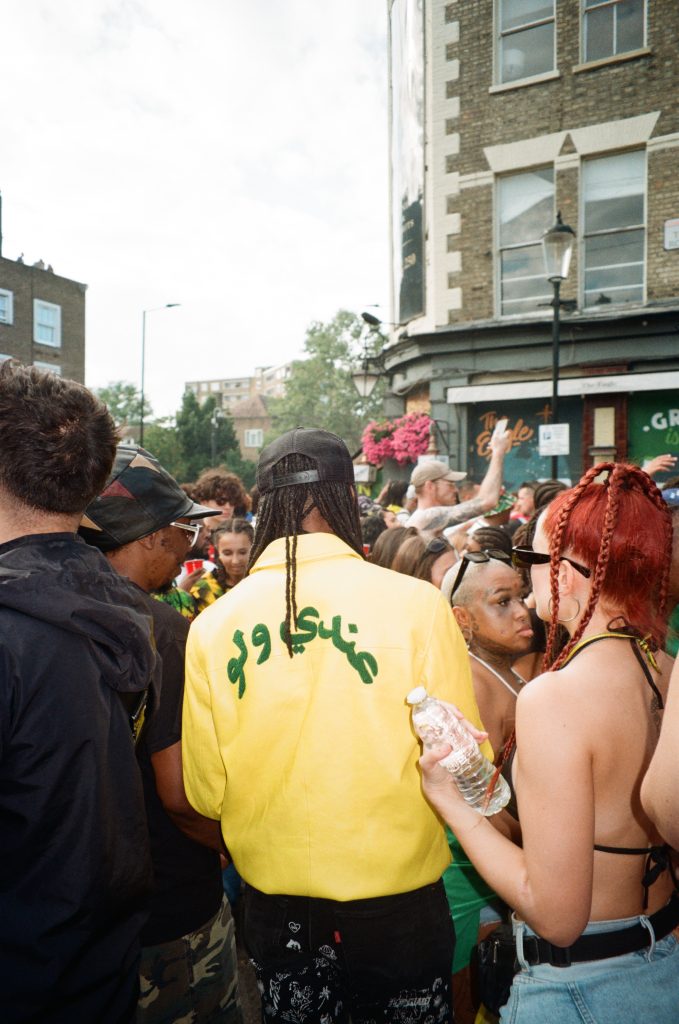
How do you feel about shooting film and not knowing if the images to be processed later will come out well or not?
I try not to overthink the outcome of my shots once I make them because you can be your own worst enemy sometimes as a creative. I read this quote by a philosopher named Seneca “We suffer more in imagination than in reality.” This really resonated with me as we can torture ourselves mentally with our imagination when really in reality there might not be the same pressures.
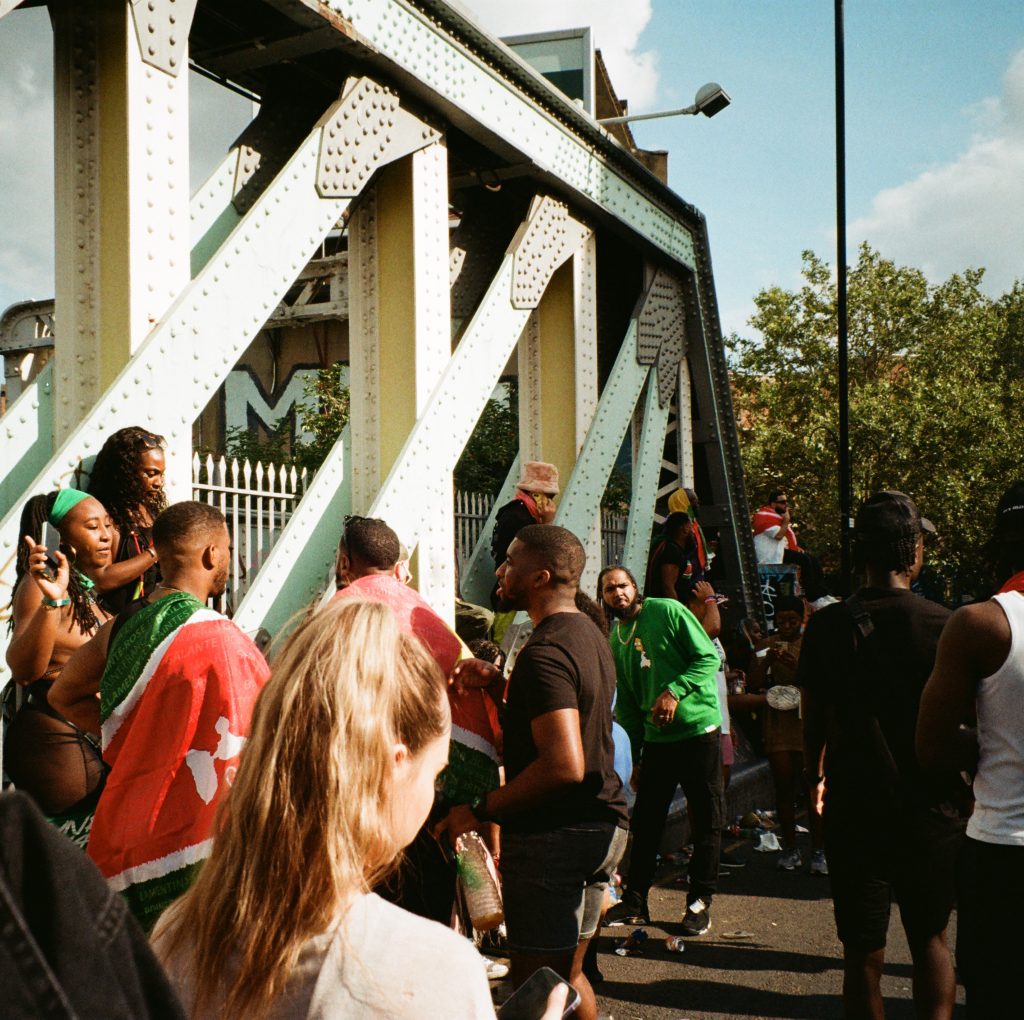
In the series of images, you shared with us, which is your favourite image, and can you quickly share the story behind it?
I would say the photo of the young black boys and one of them has this cheesy grin and you can feel the bliss and joy through his smile. this is so significant as the narrative that the media paints of black men is that they are emotionless and therefore can be seen as dehumanising. whereas, this photo captures the opposite of that narrative and it has a special place in my heart.
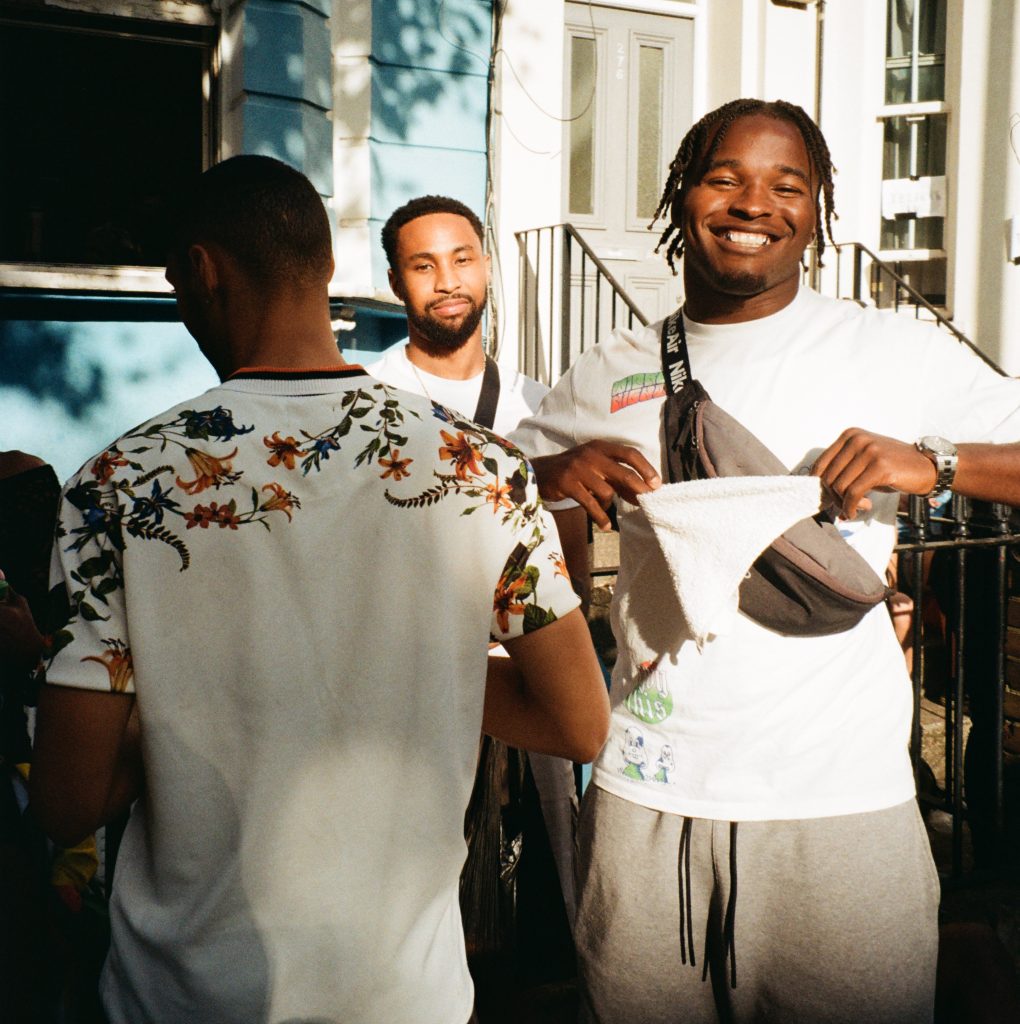
Are there other photographers whose work you enjoy and draw inspiration from?
No- It’s funny I don’t really get inspired by other photographers. I get inspired by my family and friends and my roots as a Somali living in London. Even in other fields, I might see a fashion designer release a new collection or a musician make a new song and that would inspire me because, at the end of the day, we’re all creatives and creativity is transferable and contagious.
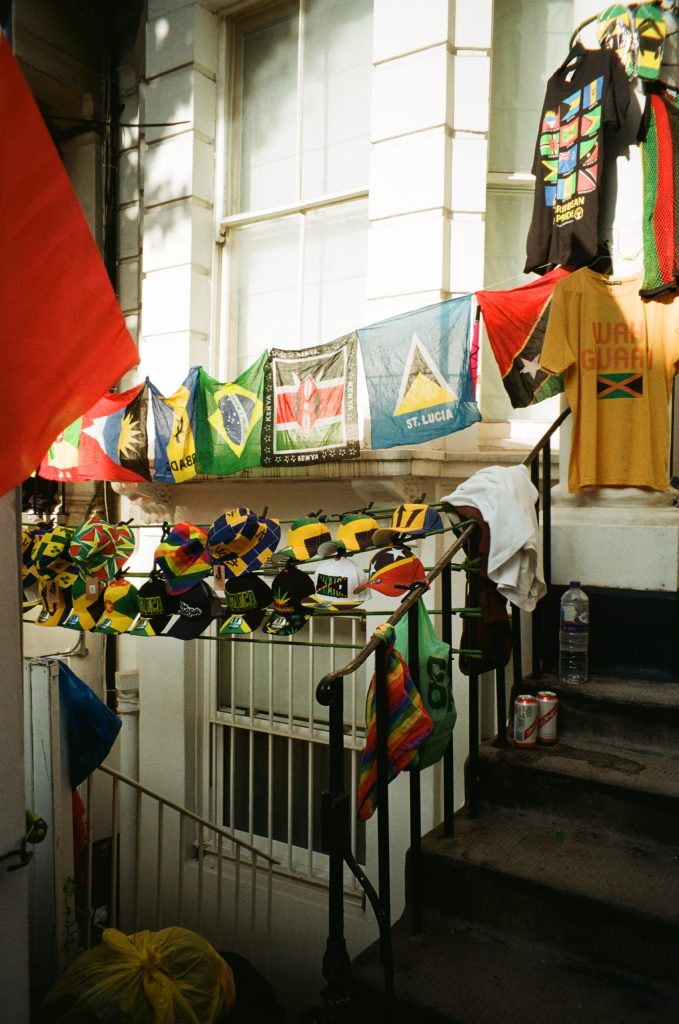
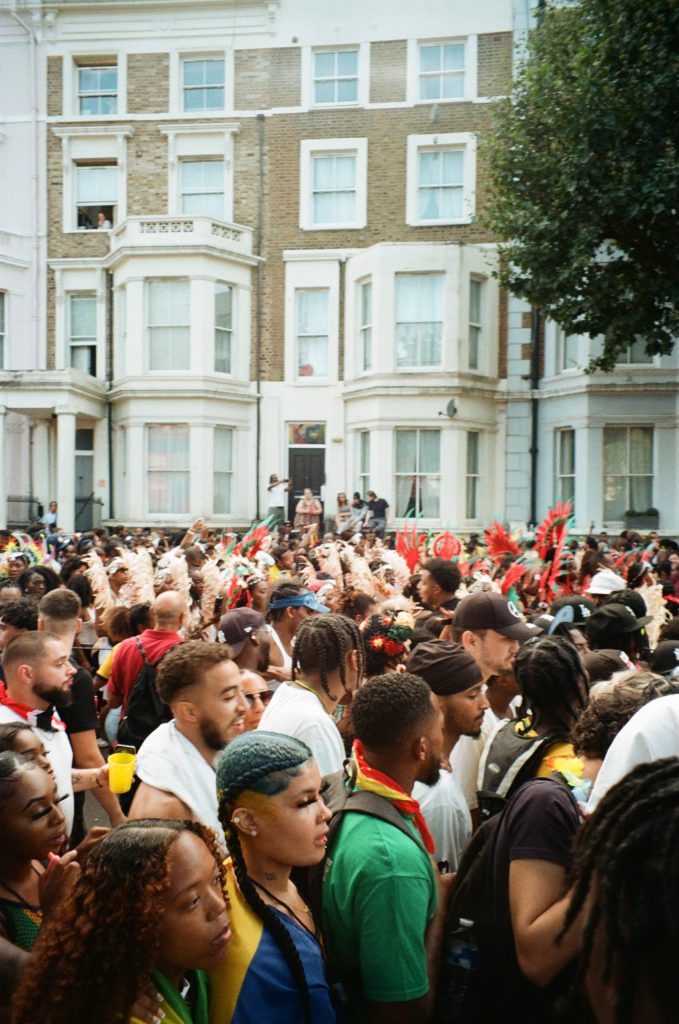
You seemed to focus your lens a lot on the flags at the festival so we thought to ask you, what do the flags at the carnival mean to you or how do they make you feel when you see them?
I think it’s a symbol of how multicultural London is and how lucky we are to have a rich culture from all around the world. specifically, the influence that the Caribbean has had on urban London culture.
